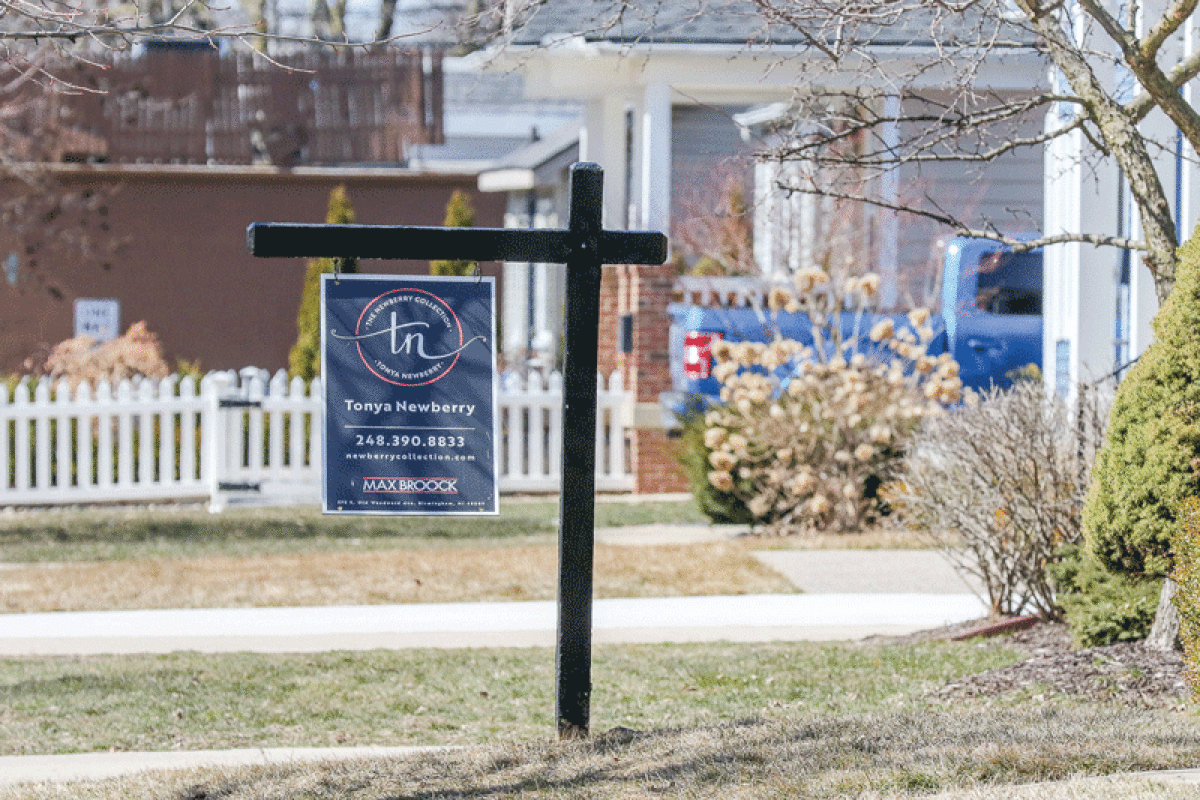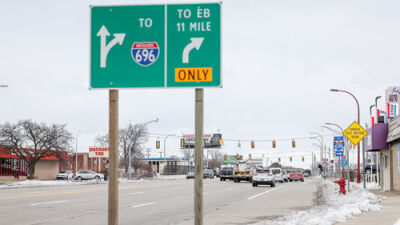BIRMINGHAM — The Birmingham Bloomfield Chamber of Commerce gathered at the Village Club for the Real Estate Forecast Breakfast March 9.
The BBCC hosted two experts who spoke on different areas of the real estate market, moderated by Michael Vogt, senior counsel at Clark Hill.
Todd Szymczak, the senior vice president of investment sales for Farbman Group, presented what people have seen, what they are seeing now, and what they can expect to see in retail, office space, multifamily and industrial real estate.
Dan Elsea, the owner of Real Estate One, presented reports, trends and predictions on residential real estate.
Retail
Szymczak said retail real estate is looking overall positive. According to his presentation, most retail came out of the pandemic better than expected, and consumer spending is strong.
Areas that are doing well are fitness, beauty and self-care properties, and dollar stores, while malls are struggling.
He predicts that the strongest malls are doing OK, such as Somerset Collection, but the weakest will get redeveloped, such as Eastland, Northland, Summit Place and Lakeside.
Office space
According to Szymczak’s presentation, office space real estate is a little more complicated due to companies downsizing and the issue of debt.
Currently, there is an active market for spaces under 5,000 square feet, moderate demand for spaces 5,000-10,000 square feet, and low demand for spaces 10,000 square feet and over.
Another layer to office space rental is that many loan terms mature in 2023-24.
Szymczak shared how some locations in the area are in a higher demand than others.
“If you own an office building in Royal Oak, Birmingham or Bloomfield Hills, that is where people want to be,” Szymczak said.
The most desired amenity for an office is a short commute. Easy parking, and walkability to lunch spots and community assets are also highly desired.
Multifamily
According to Szymczak, multifamily real estate bought pre-COVID is doing fine.
He said the market is seeing a lot of new supply, and people can expect the new supply to be absorbed. As more high-end options are becoming available, the oversupply is expected to hurt the low end the most.
Birmingham, Royal Oak, Ann Arbor and Grand Rapids are doing well in this area, he said.
Industrial
Szymczak ended his presentation with a note about industrial real estate.
He indicated that the industrial market is currently doing very well, but, according to his presentation slides, construction costs and energy costs are likely to stay at higher levels than pre-2020.
Residential
Elsea began his presentation by discussing the market from the perspective of homeowners, compared to Realtors. He said that from the perspective of a homeowner, the market is doing fine. However, there is a little bit more worry among Realtors.
“We are coming off of insanity, and now it is more normal,” Elsea said. ”Whenever there is a change, it doesn’t matter what’s going on in terms of where it was and where it is, whenever you have an inflection point of change, that causes stress.”
Elsea said he does not think there is anything on the horizon right now that is going to cause a housing crash.
“The market we are going through now is 2008 without the foreclosures,” Elsea said.
Elsea suggested that, statistically speaking, this could be considered a real estate recession.
“We are coming from a crazy market to a slow market, and that percentage change probably does qualify, but it is still a good market,” Elsea said. “For that reason, there are not a lot of foreclosures, and what caused the value change and the crushing feel of 2008-2012 was foreclosures. … That is not going on now, and there is nothing in the foreseeable future to cause that.”
Elsea said that, in general, what we are going to see for the next few years is what we are seeing now, including tight inventory.
Since home affordability is at a 30-year low, the way to improve this is by adjusting one or all of the three legs of real estate: household income, home values and interest rates.
According to Elsea’s presentation, household income is rising, but is offset by inflation; home values are at all-time highs and are expected to drop in 2023 — however, low inventories should limit large price drops; interest rates are expected to fall in late 2023-2024.
“As much as the headlines are talking about horrible things, in general, it is a pretty healthy market. The values are not declining,” he said.
Elsea outlined market opportunities in 2023, including a growth in the value gap between move-in-ready and the rest of the market.
As for his 2023 expectations, he said there will be a 10%-15% decrease in homes sold; home values will change between the range of a 3% increase to a 5% decrease; inventories will trend the same as in 2022 or lower, and interest rates will be in the mid 5s to low 6s.
To view the complete presentations of Elsea and Szymczak, visit bbcc.com/get-involved/past-events.
 Publication select ▼
Publication select ▼






















